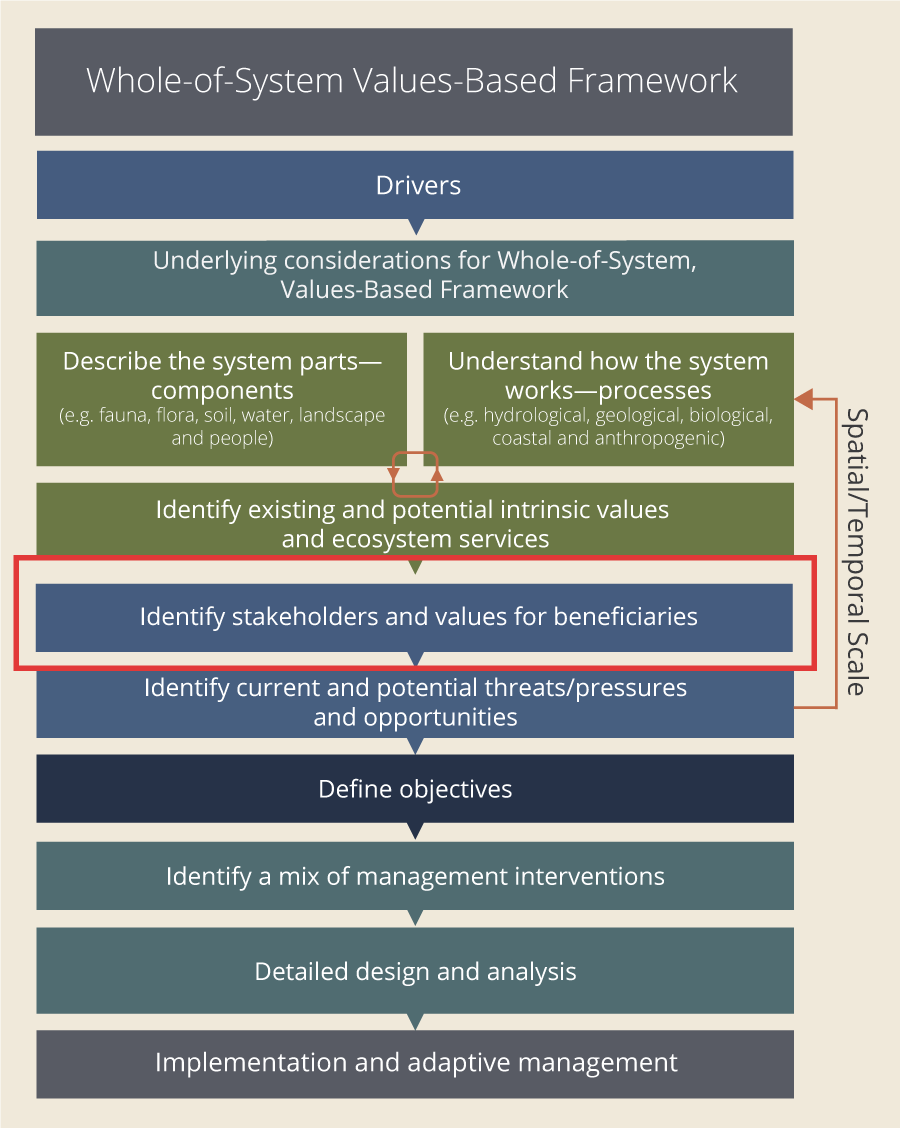|
|
Identify stakeholders and values for beneficiariesBeneficiaries benefit from ecosystem services provided by the environment. However, not all people in the system are beneficiaries and some stakeholders may not benefit from, or are negatively impacted by, a service. Identifying and documenting stakeholders and beneficiaries and how they are affected by the services from an ecosystem enables decision-makers to understand potential conflicts and opportunities[2]. Values can be biophysical, economic, social, and/or cultural and should be included in decision-making to ensure that management interventions represent what matters to beneficiaries[2]. In addition to intrinsic values, there can be a range of beneficiaries valuing the services produced by a system (and therefore, a diverse range of values). For example, one beneficiary might value the aesthetic benefits that a coastal wetland provides, while another beneficiary might value the same wetland for the protection it provides from storm surges. Identifying stakeholders and beneficiariesHaving a thorough understanding of the system’s components, processes, and services will provide a starting point for identifying the types of stakeholder and beneficiary groups who may be interested in management activities. These groups could include:
Stakeholders and beneficiaries can be identified through several methods. These could include:
Identifying values for beneficiariesSocial, cultural and economic values can be identified by actively engaging stakeholders and beneficiaries, using the ecosystem services list, through:
Not all values can be expressed in monetary terms, and this does not reduce the importance of the values. In identifying values, it is important to document existing values, derived from the system in its current state, and the potential values, including the stakeholders and beneficiaries, which may be generated after management interventions or during particular events. Recognising and managing conflicting valuesBecause different beneficiaries and stakeholders have differing values, there is potential for conflicts between beneficiaries or for stakeholders to be negatively impacted by a management intervention[1]. For instance, a project that focuses on achieving improved biodiversity outcomes in the system by revegetating or converting agricultural land may benefit those who value the system for its existence or bequest value (e.g. for future generations), but negatively impact those stakeholders who value the system for food production or economic benefits. The potential for conflict must be considered in decision-making and may be partially managed by an explicit understanding of stakeholders, values, and the components and processes of the system[5]. References
Last updated: 30 June 2022 This page should be cited as: Department of the Environment, Tourism, Science and Innovation, Queensland (2022) Identify stakeholders and values for beneficiaries, WetlandInfo website, accessed 15 December 2025. Available at: https://wetlandinfo.detsi.qld.gov.au/wetlands/management/whole-system-values-framework/benef-and-values.html |

 — Department of the Environment, Tourism, Science and Innovation
— Department of the Environment, Tourism, Science and Innovation


